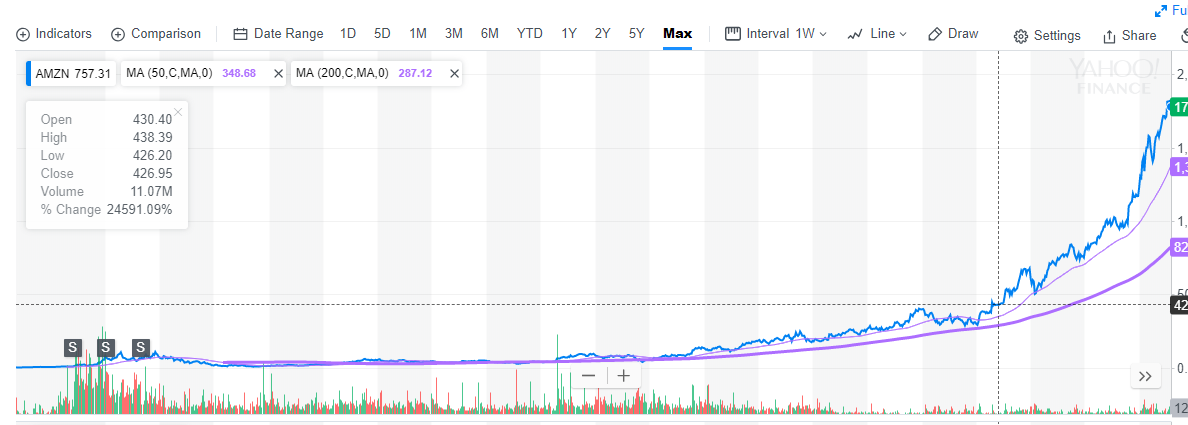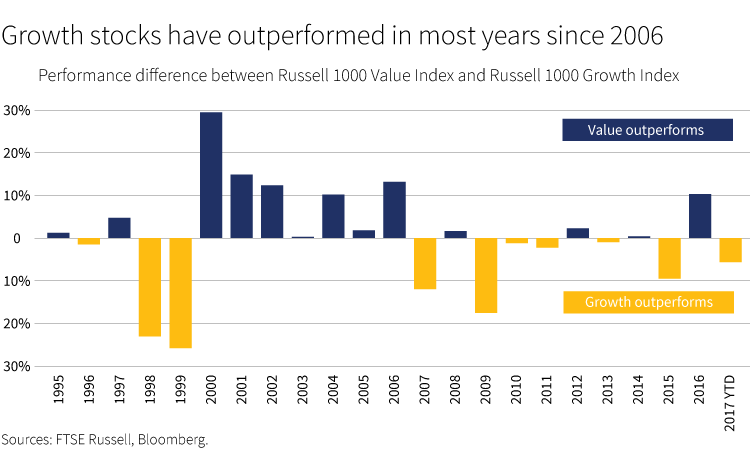"The key to making money in stocks is not to get scared out of them." -Peter Lynch
The term investing refers to risking one's capital with the hope of generating future returns. Not everyone commits their capital with the same objective, which often varies with age, risk tolerance, personal needs, the time period, investable surplus and even temperament.
It is only by adopting a carefully thought-out strategy that an investor can generate maximum returns while assuming minimum risk.
Fundamentally, investing approaches can be categorized into growth and value investing. Let's delve into these two approaches by looking at what each means, the pros and cons associated with each and how one compares against the other.
Value Investing: Hunting Bargains
Value investing is an approach where an investor roots for an underperforming stock in which they see future appreciation potential.
The late Benjamin Graham, who is known as one of the fathers of value investing along with David Dodd, put forth a concept called intrinsic value, which is justified by a company's assets, earnings, dividends and financial strength.
Intrinsic value is the perceived value of a company calculated using fundamental analysis by taking into account all tangible and intangible factors, according to Investopedia.
In simple terms, value investing is a strategy of investing in stocks that trade at less than their intrinsic value or those which trade at a discounted valuation.
See Also: A Guide To Value Investing
Altria Group Inc MO, with a trailing-twelve month P/E of 10.39, can be described as a value stock. The stock is trading down about 16 percent year-to-date as of July 31.
Value investors typically look for a margin of safety and therefore pick stocks trading at a bigger discount than the intrinsic value provides.
Graham's logic for the intrinsic value focus is that it will keep investors from being swayed by extreme emotions running through the markets.
The following are the criteria that were outlined by Graham for screening value stocks:
- Companies with atings (based on S&P) of B+ or better.
- Total debt to current asset ratio of less than 1.1.
- Current ratio of over 1.5.
- Positive earnings growth during the past five years.
- Price/earnings ratio of 9 or less.
- Price/book value of less than 1.2.
- Dividend-paying companies.
How Intrinsic Value Is Calculated
-
The discounted cash flow method, which discounts all expected future cash flows at an appropriate rate to arrive at the net present value.
- Multiples valuation, which takes the trailing 12-month EPS multiplied by expected P/E, or EBITDA multiplied by current EV/EBITDA ratio, or sales multiplied by the P/sales ratio.
- The dividend discount model, which discounts back all the future dividend payments of a company.
Growth Investing: Betting On The Future
Growth investing, as the name implies, lends a growth focus, as investors scout high-growth companies that generate above-average growth relative to the industry in which they operate. This approach doesn't shun expensive stocks and recommends buying them if they have superlative growth potential.
The accent here is on the equity with the highest growth potential, rather than on valuation metrics that delineate a stock as cheap or expensive.
Amazon.com, Inc. AMZN, which went public in 1997 at $18 per share, is now close to $1,800 over a 20-year period. This represents an appreciation of about 10,000 percent.

Although Amazon's valuation is astronomical, it is still considered a growth stock given the attractive opportunity presented by e-commerce and the cloud. Amazon Web Services has been generating revenue growth at a year-over-year clip of 40-plus percent.
The company's subscription services, which comprise annual and monthly fees associated with Amazon Prime membership — as well as audiobook, e-book, digital video, digital music and other non-AWS subscription services — also offer high growth potential. Excluding forex, subscription services clocked in revenue growth of 55 percent in the most recent quarter.
See Also: Which Is The Better Buy: Netflix Or China's Fast-Growing Iqiyi?
Screening Growth Stocks
Several criteria exist for selecting a growth stock, and some basic screening criteria are listed below:
- Zero in on a sector showing sustainable growth; tech stocks usually qualify.
- Look for industries and sectors with high barriers to entry.
- Consistently rising sales.
- Strong historical earnings growth: over 15-percent growth over the past three years.
- Earnings growth outperforming the market as a whole.
- Robust profit margins.
- Improving return on equity.
- Strong stock performance.
Growth Vs. Value Investing
The growth vs. value debate has been raging on for some time now, although there hasn't been a clear verdict in favor of either of the investment themes.
Value stocks outperformed growth stocks over a 90-year period beginning in 1926 by 17 percent to 12.6 percent, The Motley Fool quoted Bank of America Merrill Lynch Chief Investment Strategist Michael Hartnett as saying. Value stocks outperformed growth stocks in about three out of every five years, he said.
Yet growth stocks have outperformed value stocks in most years since 2006.

The success of either of these strategies is contingent on certain factors such as the stage of the economic cycle, the interest rate environment, credit costs and market cycles.
Growth stocks do well when economic growth is decelerating, as investors seek out high-growth companies with predictable earnings streams.
On the contrary, value stocks tend to outperform when the economy is growing.
Value stocks are generally thought to be a better bet in a rising interest rate environment. "Value stocks have outperformed in 14 of the last 17 rate-tightening periods," CNBC quoted Patrick O'Shaughnessy of O'Shaughnessy Asset Management as saying.
Value stocks have strong existing cash flows, and the cash flow certainty drives investors toward them when interest rates rise. Growth stocks are valued on future earnings, making investors skeptical of their investment worthiness in a rising rate environment.
A bullish market is supportive of growth stocks, while value stocks fare better in a bearish market as risk averse investors flock to bargains.
See Also: Best Long-Term Investments
Relative 1-Year Performance Of Growth Vs. Value Stocks
The iShares Russell 1000 Index (ETF) IWB has gained about 9.1 percent over the past year compared to the 18.4-percent advance by the iShares Russell 1000 Growth Index (ETF) IWF.
This has been the story over the past decade, with growth stocks outperforming their value counterparts, marking one of the longest periods of outperformance by growth stocks.
This dynamic could change going forward, if comments by Charlie McElligott, head of cross-asset strategy at Nomura, are to be believed.
The three-day move in U.S. value/growth suggest the market may be rotating out of growth stocks and into value stocks in a big way — the biggest since the rotation that happened after the collapse of Lehman in September 2008, McElligott was quoted as saying by MarketWatch.
Final Thoughts
Since both value and growth investing have their own merits and demerits, investors should look to include both value and growth stocks in their portfolio, as such a strategy will help generate returns irrespective of how the factors impacting the two investment styles pan out.
Edge Rankings
Price Trend
© 2025 Benzinga.com. Benzinga does not provide investment advice. All rights reserved.
Trade confidently with insights and alerts from analyst ratings, free reports and breaking news that affects the stocks you care about.